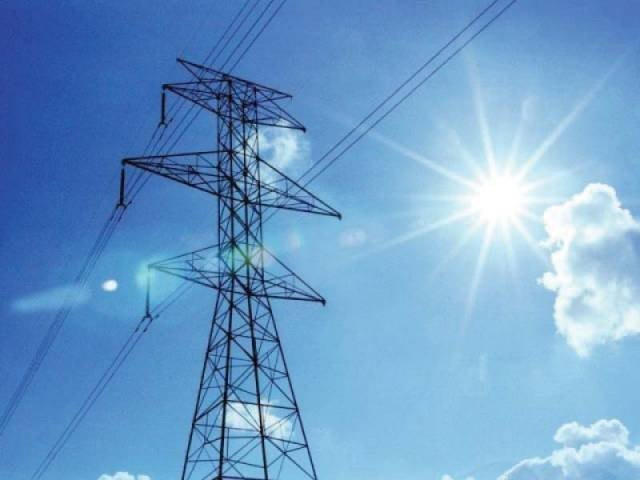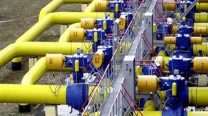Govt should set target of 50% reduction in T&D losses
High-profile loss reduction activity backed by a strategy and action plan is a must

High-profile loss reduction activity backed by a strategy and action plan is a must. PHOTO: FILE
Electricity consumption should have crossed a level of 100,000 gigawatt-hours (GWh) by now, which is a good news. This, however, pushes the absolute loss numbers up also.
It has been estimated that total energy system losses amount to $2,168 million per year, of which electrical system losses are $1,400 million and gas system losses are $768 million. These losses can be reduced by almost half, saving about $1,186 million.
Energy losses have been high in many developing countries including in our region, where India and Bangladesh also suffer from the same syndrome. However, these countries and their utilities are on a path of loss reduction. A lot of literature documenting successes and the strategies and methodologies has come to the fore in this respect.
It may be of interest to have a review of similar losses prevailing in other parts of the world and make a judgement on the improvement level that may be possible in Pakistan.
World average transmission and distribution (T&D) losses are at 8% while in the developed world, the average is 6% - 2% for transmission and 4% for distribution and almost all of it is technical loss and very little commercial or theft, etc.
In Africa, East Asia and the Middle East, the average figure is 12%, in Latin America it is 17% and in South Asia the average is the highest at 20%. Pakistan lies at this average.
T&D losses have been decreasing over time due to advancement in electrical technology, for example, in 1926 in the US, these losses were almost the same as those in Pakistan today and came down to 6% by 2008.
It can be conjectured that currently technical losses are 10% and commercial losses are 10% in Pakistan. We can assume a target level of improvement to 8% for technical losses and 2% for commercial losses, totalling 10%.
It is vital that improvements are made in order to make the power sector sustainable and viable. However, what is not certain is that it can be achieved in the next five years, seven years or 10 years or cannot be achieved at all.
It is good to know that the prime minister is giving targets to his ministers and it is hoped that an adequate target will be given by him in this respect.
Although apparently there has been realisation and sensitivity among successive governments in Pakistan to reduce these losses, at best there is stagnancy in the electrical sector and in the gas sector there is degeneration from bad to worse.
Inefficiencies in power sector cost Pakistan $18b
Energy losses, especially theft, are a complicated affair. All types and kinds of people consume more than they can afford or would like to pay for and indulge in stealing energy; rich and the poor, weak and strong, industry, commercial, domestic, etc.
The issue becomes more complicated by the technical losses creeping into theft and vice versa and the collusion of insiders with outsiders and the associated mafias.
Difficult to monitor, control
A common theme in the utility sector is its hugeness and geographical expanse, which makes it quite obtuse and abstract, difficult to monitor and control. A possible but partial solution may be to fragment the larger distribution companies (DISCOs) into smaller ones.
Privatisation does not help in a cost-plus regulated environment in the absence of a competitive market, which may reward efficiency.
NEPRA imposes Rs2 million fine on K-Electric
There is, however, light at the end of the tunnel as evident from the success of many countries and utilities in this respect. A DISCO (called Discom in India) APSPDC in the state of Andhra Pradesh has managed to reduce its T&D losses from 12.98% to 10.68% in four years and subsequently to 6%.
In Gujarat, MGVCL has managed to reduce its T&D losses from 14.51% to 12.41%, a reduction of 2.10% in the same period. In Delhi, TPDL/BSES reduced its losses from 20% to 16.06% and then to 10.63% under a franchise system operated by Tata. In Maharashtra, MSEDCL managed to achieve the highest reduction of 6.6% in four years, from 20.6% to 14%.
Need for strategy, action plan
For improving anything, one has to know where he stands and where he wants to go and what ways and means have to be adopted and are available. In technical terms, it is called strategy and action plan.
Thus, the government may do well by asking all the DISCOs to develop a strategy and action plan. Although targets will vary among companies, a 50% reduction and a five-year time frame should be a general target.
It is essential that loss reduction cells are formed, which should coordinate and manage all of this activity. Primarily, it has to be at the DISCO level and at the proposed Pepco level.
Pepco is there, it has to be energised. An action plan without monitoring is of no use. An element of third-party involvement may have to be there due to the existing insider mafias.
A wider anti-corruption drive is required to curtail these tendencies, which is well discussed and is being improved upon by the PTI government.
There are several technical steps that may have to be taken beyond the strategy and action plan without which all of it may remain a paper-full bureaucratic exercise. Several of which like amending the law and support system of law enforcement strategies, removal of illegal connections and unmetered electricity, proportional and higher load-shedding in high-loss areas have varying levels of success.
This has to be improved, institutionalised and brought into a formal framework of the action plan and monitoring.
Concluding, a formal and high-profile loss reduction activity backed by the strategy and action plan is a must to take the energy sector out of its sustainability issues. Both power and gas loss reduction involves identical planning and management systems, notwithstanding the technicalities of the systems.
It is hoped that the leadership and managers of the Ministry of Energy (Power and Petroleum Divisions) would redouble their efforts in a more organised and persistent manner.
The writer has been member energy of the Planning Commission until recently
Published in The Express Tribune, January 28th, 2019.
Like Business on Facebook, follow @TribuneBiz on Twitter to stay informed and join in the conversation.



















COMMENTS
Comments are moderated and generally will be posted if they are on-topic and not abusive.
For more information, please see our Comments FAQ